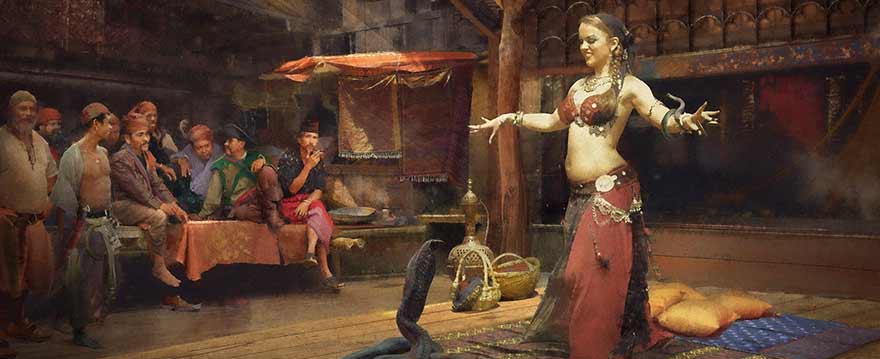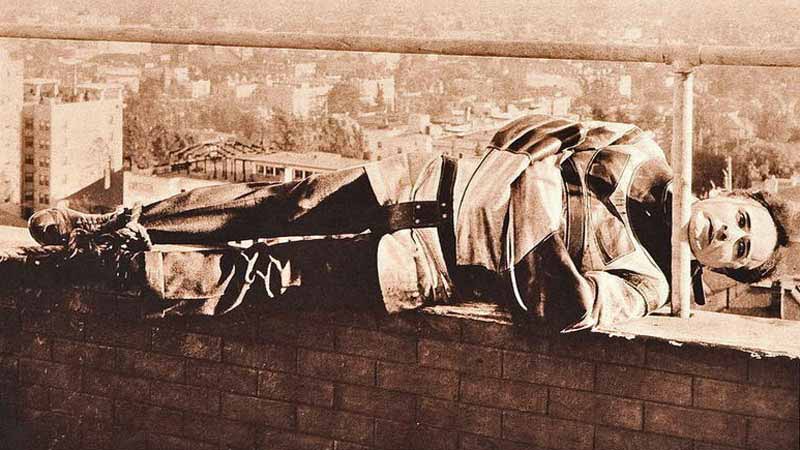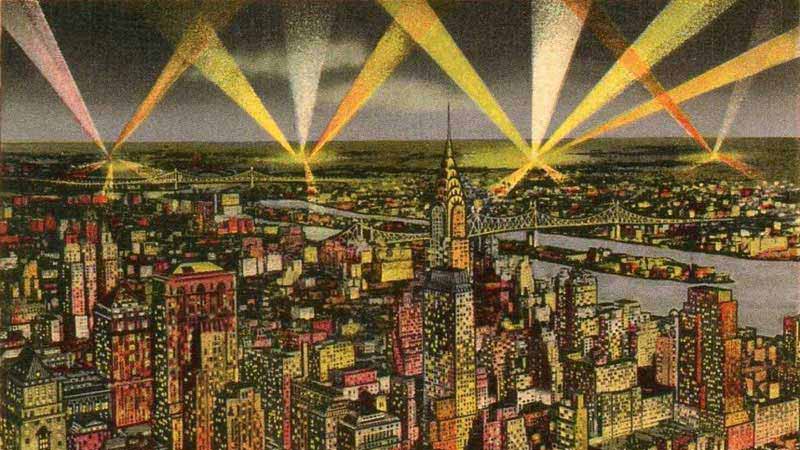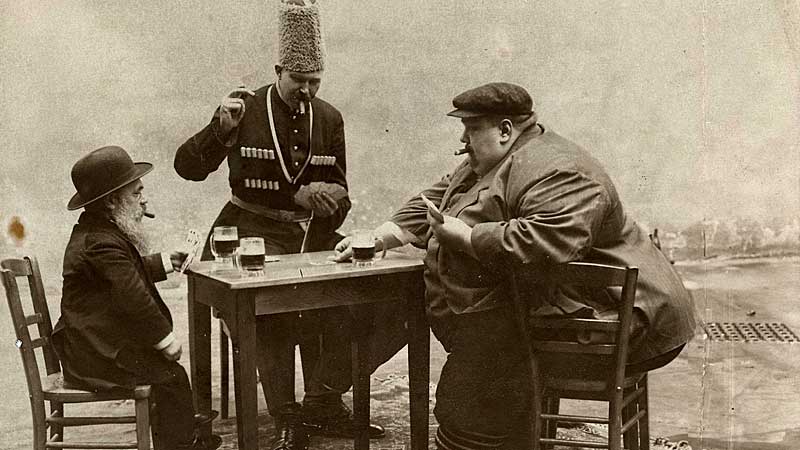
by Dr. Will Given
University of California, San Diego
Story Structure in Magic 102
In our last article, Story Structure in Magic 101, we learned about the basic three-act structure utilized throughout many Western forms of storytelling, which consists of beginning / middle / end. In Story Structure 102, we are going to delve a bit deeper into the topic in order to find precisely how we can add even more layers to our performances and, hopefully, keep your audiences engaged. To do so, we are going to complicate our nice and tidy Aristotle-inspired structure by expanding it to include five elements.
Our new model will now consist of:
- I – Introduction
- II – Rising action
- III – Climax
- IV – Falling action
- V – Catastrophe / Resolution
This model we will be examining comes from a 19th century German writer named Gustav Freytag and is now most commonly referred to as "Freytag's Pyramid." If you envision actually drawing a graphical representation of this model, Climax would be at the apex of an inverted V. Picture a mountain. You start off on the left side climbing up to the pinnacle and then descend on the right side. This is Freytag's Pyramid.
Let's examine each element in a bit more detail, specifically through the lens of performing magic.
The Introduction
This is where you set the stage for your performance. Your audience needs to know who you are and what the tone of your show is going to be right from the onset. A lot of performers mistake the introduction as beginning the moment they take the stage. This is not true. For your audience, the show can begin long before they even step foot into your performance venue. Your website, your promotional material, the printed program to your show, the aesthetic of your lobby, your costuming, your set, the props you choose to use, the music playing, (the list goes on and on) – these elements are all part of your Introduction. Your audience is processing all of this information in order to determine how they are going to engage with your performance, even on a subconscious level. Do not overlook this. Take, for example, Helder Guimarães's 2020 show at the Geffen Playhouse, The Present, directed by Frank Marshall. The show involved each audience member receiving a non-descript brown box tied with twine with instructions not to open it until showtime. Do you think the show began for those audience members when Helder took the stage? Absolutely not. The show began the moment they first saw the box arrive in the mail and with the anticipation of the mystery they were soon to be a part of.
Rising Action
Something MUST propel your show forward. Remember from Story Structure in Magic 101 that you do not want to just give your audience a parade of tricks to create an endless Groundhog Day hell for them. Avoid the all-too-familiar trap of "and now for my next trick." What is driving you forward? What is taking you, and more importantly, your audience, from point A to point B? We used the example of The Wizard of Oz in our last article, and it might be easy to think that the tornado is what is driving the story forward but think to yourself about all of the events leading up to the tornado. Dorothy's dog, Toto, bites Almira Gulch who gets a court order to have the little dog whacked Goodfellas style. Dorothy refuses. Auntie Em and Uncle Henry tell her she must comply, so the evil Miss Gulch takes away the dog away to kill it (great kids' movie so far, isn't it?). Toto escapes and returns to Dorothy who decides to run away from the farm, so Toto won't be executed. Even before the tornado comes, the action is being propelled forward. Dorothy's home no longer feels safe and she must go out into the world on her own. There is a driving force pushing Dorothy (and the story) further and further away from where she was when we first met her.
The same holds true for your own performances. What is the driving force propelling you and your audiences forward up the hill?
Climax
The climax is the turning point. It is where the main character can no longer go back to the way things were before the story began. This is the point where everything changes. What is this in your own show then? This is where your audience needs to feel like they are experiencing something they never knew was possible, that their fundamental understanding of the very fabric of reality has now forever been altered, that they can no longer unsee or unknow what they have now experienced. Just a small, easily accomplished feat, right?
Falling Action
Whereas with the rising action we are being propelled away from something, with falling action we are now racing toward something. Once we hit the climax, I am a firm believer that the end must come very quickly. Once Dorothy discovers the great Wizard of Oz is actually just a man behind a curtain, she is all but almost home. We don't want to dissipate any of the momentum that we have created. Take a look at Derren Brown's Oracle act. It starts off slow, and then by the end, when he collapses on stage, you feel like you are on a freight train running out of control downhill. That momentum is what you should be working for throughout your whole show. Capitalize on that.
Catastrophe / Resolution
While Freytag was talking about drama, and hopefully your show does not end with a catastrophe, the fact is, you need to know what the ending to your show is. Period. Not only do you need to know what the ending to your show is, you need to know why that is the ending. Too many times I see performers not knowing when to end their performance. Don't be that person. You are not The Rolling Stones; you do not get to come back onstage for multiple encores. End your show and leave your audiences wanting more.
The main point of all of this is to start looking at your own performances through a different lens. We put so much time in on practicing and perfecting different sleights, that we can forget that to a spectator, the magic is actually something much, much different. This is why it is imperative to work some story structure into your act. Build tension and then release that tension. Keep doing so until you generate more and more momentum. Allow your audience to then get caught up in the tornado of that momentum as you create a memorable experience that isn't simply about tricks, but about the journey you take together.
Dr. Given is a writer and director. He has PhDs in Drama and in Theatre and is a member of the prestigious The Dramatists Guild. He has been involved in over twenty-five stage productions as an actor, director, or dramaturg. He has written for television, film, and the stage, and served as a screenwriting judge for the Austin Film Festival, where he has analyzed and given feedback on hundreds of scripts. He is a Magician Member of the Academy of Magical Arts and holds the rank of AIMC in The Magic Circle. Dr. Given is based in Southern California where he has taught at a university for the past ten years, helping develop the next generation of writers. He wants nothing more than to help you make your show the best it can be. You can learn more about his directorial services by writing him at The Magic Director.
A Jolly Genie?

The Magic Oracle is a FREE site but I still must pay dastardly server fees! Please, donate ANY amount... $1, $5, $10, why not $1 million?
THANK YOU for keeping magic alive... and me, a Jolly Genie!



